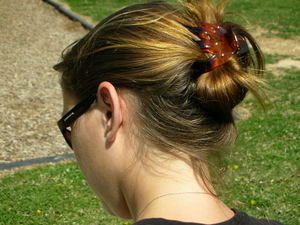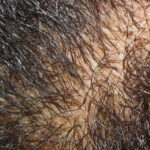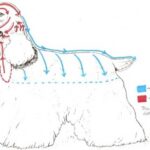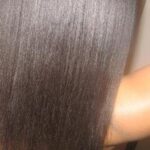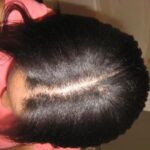Are you staring at the drain in your shower, wondering where all that hair came from? Are you looking at a brush or comb filled with hair? Hair grows from follicles in your scalp and you are born with all the follicles you will have; no new ones will be generated.
It is normal for you to lose about 50 to 150 hairs from your scalp every day. Hair growth is cyclical. But if your hair is starting to thin, your follicles may be stressed or damaged by nutritional deficiencies, hormonal changes, underlying disease or haircare procedures.
Hair grows in repeated cycles of three phases: Anagen (growth phase), Catagen (transitional phase) and Telogen (resting phase). At any one time, the majority of your hair will be in the growing phase. This phase can last several years. At the end of the Anagen phase, there is a short transitional phase that lasts about one or two weeks. During this phase the follicle shrinks. The Catagen phase is followed by the five to six weeks’ resting phase. The Telogen phase is also called the shedding phase. After the resting phase, a new Anagen phase of growth starts. Hair is lost either in the new Anagen phase, when the new hair pushes out the old, or the old hair is shed during the transitional or resting phase. Hair thinning in women occurs either because this natural cycle of hair growth is altered or the hair itself is damaged.
Nutritional Deficiencies
Nutritional deficiencies, created by dietary or eating disorders, can cause hair thinning. For example, when your intake of protein is low, hair growth will shift into the resting phase and hair will thin. Low iron intake will also create hair loss. So eating iron-rich foods like beans, spinach and lentils may prevent hair thinning.
Hormonal Changes
Medication, trauma and childbirth can affect a woman’s hormone levels. For example, falling estrogen levels can cause hair thinning. Taking or stopping birth control pills can also lead to hair loss. Hair will thin because a large number of follicles will shift to the resting phase. However, when hormone levels stabilize, hair growth will begin again, preventing further hair thinning.
Underlying Disease
If you have thyroid disease or anemia, your may hair may thin. Again, hair growth will go into the resting phase. Treatment of the underlying cause will prevent hair thinning and restore normal hair growth.
Haircare
Some hairstyles can traumatize your hair follicles and cause hair shedding. Tight hairstyles that you wear for long periods of time like pony tails, use of hairpins, clips or extensions, may result in hair thinning. Avoid tight hairstyles or alternate with looser hairstyles.
Hair thinning can also result from drying out the scalp and hair. Hair dying, perms, blow drying and flat irons will make hair brittle and cause it to break. To prevent hair thinning, limit hair dying and air-dry hair after washing until hair is almost dry before using blow dryers and flat irons. Use conditioners and products that will keep the scalp and hair moist. Also avoid vigorous grooming. Too much forceful combing or brushing can cause breakage, especially if hair is wet.
Sources
http://dermatology.about.com/cs/hairanatomy/a/hairbiology_2.htm
http://www.skincarephysicians.com/agingskinnet/hair_loss_options.html
